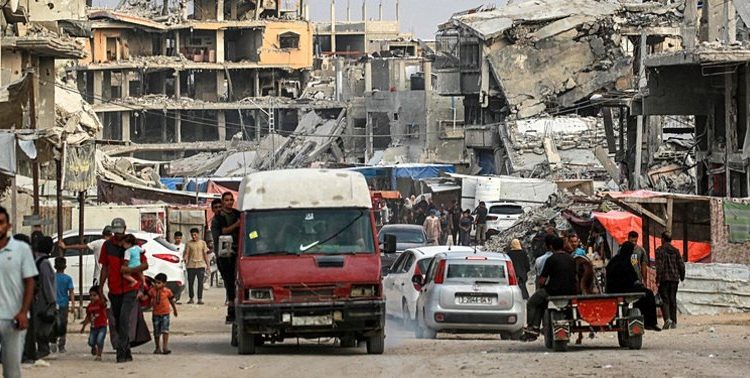A year after Israeli genocide, Gaza lies in ruins amid hunger, displacement
One year into a devastating Israeli war, hundreds of thousands of Palestinians continue to be forcibly displaced across the Gaza Strip amid destruction, hunger, and fear.
The Israeli army launched a brutal offensive on Gaza following a Hamas attack on Oct. 7, 2023, killing nearly 42,000, mostly women and children, and injuring 97,100 others.
The Israeli genocide has displaced almost the entire population of the territory amid an ongoing blockade that has led to severe shortages of food, clean water, and medicine
The assault has caused massive destruction across the Palestinian enclave with the UN estimating the debris of destroyed buildings at over 42 million tons.
The UN estimates that over 163,000 buildings, or two-thirds of pre-war structures in Gaza, have been damaged or flattened in the Israeli war.
Gaza’s government media office also said that 611 mosques and three churches were destroyed and 214 other mosques partially damaged in Israeli attacks.
The genocide has also wiped out 206 archaeological and heritage sites alongside 36 sports facilities, stadiums, and gyms.
Massive destruction
According to the UN agency for Palestinian refugees (UNRWA), around 67% of Gaza’s water and sanitation facilities have been either destroyed or damaged in the Israeli war.
The Central Bureau of Statistics and the Palestinian Environment Quality Authority estimated in June that Gaza’s available water supply had decreased to 10-20% of pre-war levels.
This has caused a 94% decrease in the amount of water available to Gaza’s population, with residents now barely able to access 4.74 liters per person per day-well below the 15-litre minimum recommended by the UN World Health Organization.
Anti-poverty group Oxfam said that 88% of Gaza’s water wells and 100% of desalination plants have been either damaged or destroyed, leading to an 84% drop in water production.
The external water supply from Israel’s Mekorot water company has also been slashed by 78%.
According to Oxfam, Israel has destroyed 70% of Gaza’s sewage pumping stations and 100% of its wastewater treatment plants and water quality laboratories.
This has led to raw sewage flooding streets and refugee camps, a situation expected to worsen during the winter months, increasing the risk of disease outbreaks among the displaced population.
Gaza’s education sector has not also been spared the Israeli attacks, with 125 schools and universities completely destroyed and 337 others damaged.
Additionally, 201 government facilities have been entirely leveled, further crippling the territory’s ability to provide public services.
The Israeli assaults and blockade have also caused diseases to spread across the Palestinian enclave.
By July, more than 25% of Gaza’s population suffered from serious, preventable illnesses caused by sewage contamination and water shortages, Oxfam said.

